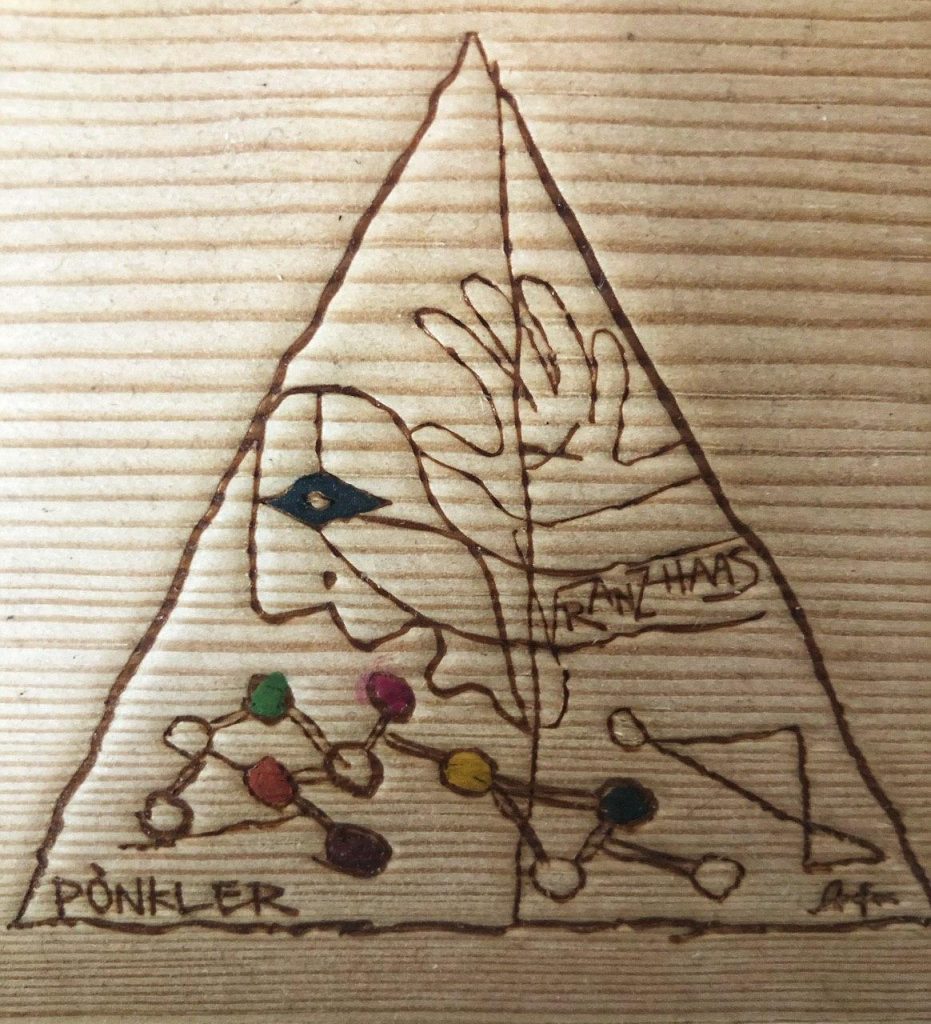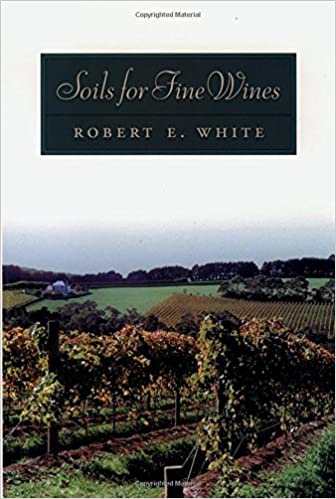Soils for Fine Wines
In recent years, viticulture has seen phenomenal growth, particularly in such countries as Australia, New Zealand, the United States, Chile, and South Africa. The surge in production of quality wines in these countries has been built largely on the practice of good enology and investment in high technology in the winery, enabling vintners to produce consistently good, even fine wines. Yet less attention has been paid to the influence of vineyard conditions on wines and their distinctiveness-an influence that is embodied in the French concept of terroir.
An essential component of terroir is soil and the interaction between it, local climate, vineyard practices, and grape variety on the quality of grapes and distinctiveness of their flavor. This book considers that component, providing basic information on soil properties and behavior in the context of site selection for new vineyards and on the demands placed on soils for grape growth and production of wines.
Soils for Fine Wines will be of interest to professors and upper-level students in enology, viticulture, soils and agronomy as well as wine enthusiasts and professionals in the wine industry.
Altre informazioni →Principles and Practice of Soil Science. The Soil as a Natural Resource
Principles and Practice of Soil Science provides a current and comprehensive introduction to soil science for students in the fields of environmental and agricultural science, ecology, soil and land management, natural resource management, and environmental engineering.
- Covers all aspects of soil science including soil habitat, processes in the soil environment, and soil management.
- Emphasizes the applications of soil science to the solution of practical problems in soil and land management.
- Highlights real-world examples drawn from the author’s international experience in the field.
- Includes an expanded color section of soil profiles and other features, and greater coverage of international soil classification
- Features new problem sets and questions at the end of each chapter, designed to reinforce important principles. An answer key is provided at the end of the text.
Understanding Vineyard Soils
The first edition of Understanding Vineyard Soils, published in 2009, has been praised for its comprehensive coverage of soil topics relevant to viticulture, and is a major resource for professionals in the industry. However, the subject is not static―new developments are occurring in the field all the time. For example, the 'organic movement' in viticulture continues to grow in importance and the emphasis on wine quality relevant to quantity is changing in an increasingly competitive world market. The promotion of organic and biodynamic practices has raised a general awareness about 'soil health' and methods to assess it, which is often associated primarily with the biological status of the soil.
Many commercial laboratories offer an extensive range of tests for soil (biological) health, the relevance of which is not clear to many growers.
However, the development of new tools for characterizing soil microorganisms and identifying the specific functions of taxonomic groups is an exciting area of research that may offer answers to some of these questions in the future. This second edition of White's influential book presents the latest updates and developments in vineyard and soil management practices. Just like the first edition, Understanding Vineyard Soils introduces readers from all backgrounds to the principles of viticulture.
Altre informazioni →Il grande viaggio nel vino italiano
Un racconto per immagini di cantine, territori e personaggi unici. Storie esemplari di vignaioli che rappresentano l'oggi, ma soprattutto il domani del vino italiano. Un grande viaggio da Nord a Sud, con le bottiglie da non perdere per ciascuno dei protagonisti e, in abbinamento, le ricette di cuochi e cuoche che hanno saputo valorizzarle al meglio.
Altre informazioni →Vini di confine
Una sorta di viaggio dantesco nel mondo della viticoltura. Così si potrebbero definire queste pagine nate dalla mente e dalla competenza del professor Attilio Scienza e dalla penna di Serena Imazio.
Anche qui troviamo maestro e discepolo, Ambrogio e Agostino, che assieme percorrono tutta la Lombardia alla scoperta dei vitigni e degli ottimi vini che si producono.
Altre informazioni →L’uomo che scoprì il tempo. James Hutton e l’età della terra
Nella seconda metà del Settecento, James Hutton, partito su un'agile barchetta scozzese verso le verità più sconcertanti, provò che la Terra è molto più vecchia dei canonici 6000 anni stabiliti dagli studi biblici e che è continuamente plasmata e riplasmata da una miriade di forze. La rivoluzione temporale inaugurata da Hutton è all'origine non solo della geologia attuale, ma di un modo laico di pensare la collocazione dell'uomo nell'Universo. In un momento in cui la nuova sintesi evoluzionistica fonda insieme la teoria della Terra di Hutton e l'origine delle specie di Darwin, questa biografia è insieme la storia epica di una delle più grandi scoperte scientifiche e di una brillante cultura, quella dell'Illuminismo scozzese.
Altre informazioni →La mappa che cambiò il mondo
In una piovosa mattinata del 1819, William Smith uscì dalla prigione londinese per debitori di King's Bench: aveva cinquant'anni, il volto invecchiato e sciupato dalle intemperie e non possedeva più una casa; eppure era il padre fondatore di una nuova scienza destinata a mutare il futuro dell'umanità, era l'autore della prima vera mappa geologica di un'intera regione del mondo, era l'uomo che aveva saputo sfidare i dogmi del creazionismo biblico per aprire la strada allo sfruttamento razionale del sottosuolo e delle sue ricchezze. Ma la sua grandezza non era stata riconosciuta, l'aristocrazia dei dilettanti geologi del suo tempo lo aveva prima ostacolato e poi addirittura defraudato delle sue scoperte.
Altre informazioni →Terroir. The role of Geology, Climate, and Culture in the Making of French Wines
The French word terroir is used to describe all the ecological factors that make a particular type of wine special to the region of its origin. James E. Wilson uses his training as a geologist and his years of research in the wine regions of France to fully examine the concept of terroir. The result combines natural history, social history, and scientific study, making this a unique book that all wine connoisseurs and professionals will want close at hand. In Part One Wilson introduces the full range of environmental factors that together form terroir. He explains France's geological foundation; its soil, considered the "soul" of a vineyard; the various climates and microclimates; the vines, their history and how each type has evolved; and the role that humans--from ancient monks to modern enologists--have played in viticulture. Part Two examines the history and habitat of each of France's major wine regions. Wilson explores the question of why one site yields great wines while an adjacent site yields wines of lesser quality. He also looks at cultural influences such as migration and trade and at the adaptations made by centuries of vignerons to produce distinctive wine styles. Wilson skillfully presents both technical information and personal anecdotes, and the book's photographs, maps, and geologic renderings are extremely helpful. The appendices contain a glossary and information on the labeling of French wines. With a wealth of information explained in clear English, Wilson's book enables wine readers to understand and appreciate the mystique of terroir.
Altre informazioni →Vineyards, Rocks, & Soils. The wine lover’s guide to geology.
Jurassic, basalt, moraine, flint, alluvial, magma: what are these words and what do they have to do with wine? The answers are here in this book. They are geological terms that reflect a bond between wine and the land. Understanding geology, however, is tricky. Geological concepts are obscure; processes can be imperceptibly slow, invisible, and unimaginably ancient. The terminology is formidable, such that even the names of common rocks carry an air of mystery.
Geology is introduced plainly, starting with basic principles, all in the context of wine. The emphasis is on the kinds of processes that shape vineyards, and on the minerals, rocks and soils that host the vines. Geological words now commonly seen in wine writings are systematically explained. You will learn the stories behind some of the names, the human face of geology.
The book also explores how the geology-wine connection manifests in the finished product and evaluates its importance, particularly in the contexts of minerality, terroir, and wine taste. The fact is that geology is increasingly being promoted in the world of wine; the aim here is to help it be properly understood.
Altre informazioni →Atlante geologico dei vini d’Italia
Un libro autorevole sul vino italiano in rapporto alle caratteristiche del suolo. Di area in area - dal Barolo al Nerello, fra DOC e DOCG - uno alla volta, ciascun territorio è schedato e analizzato: origine, natura e formazione del suolo, profilo climatico, coltivazione agricola, vinificazione. Nell'introduzione, chiariti i concetti essenziali, scorriamo la carta geologica italiana con i 35 vitigni autoctoni e i 5 internazionali che sono l'anima dell'infinita varietà della nostra produzione. Infine, caratteristiche fondamentali del vino e degustazione di 4 bottiglie. Un'opera di consultazione, innovativa nell'impianto, pensata per tecnici, sommelier e cultori del vino che vogliono avvicinarsi ai grandi vini italiani in modo tecnico ma del tutto accessibile.
Altre informazioni →
